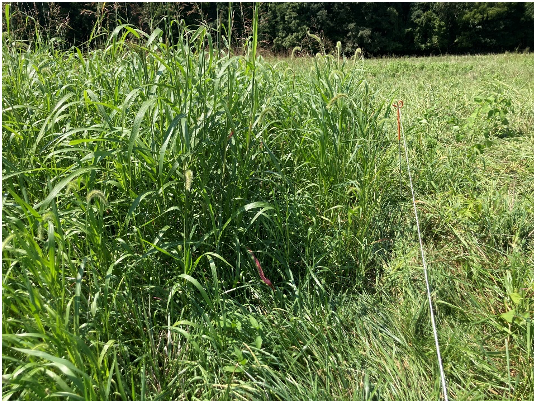Hard to believe, but fall and cooler temperatures will be here in less than a month. Soon after that, a frost will occur. Members of the sorghum family have a compound called dhurrin that will release hydrogen cyanide, commonly known as prussic acid, when plants are stressed by drought or frost. While traveling to Spencer County for a field day this week, it was noted that Johnsongrass was commonly seen in pastures. Johnsongrass, a perennial sorghum, has the potential to produce hydrogen cyanide and cause livestock death when plants are stressed. Other planted sorghums when stressed will produce hydrogen cyanide, too.

Johnsongrass was evident in pastures while traveling to southern Indiana this week. It has the potential to produce prussic acid (hydrogen cyanide) when frosted. (Photo Credit: Keith Johnson)
Producers are encouraged to utilize sorghums before a frost occurs to reduce the possibility of prussic acid poisoning. Links below to a publication and video will discuss ways to reduce the fear of prussic acid poisoning.
In the near future, dhurrin-free sorghums will be available for seeding as a result of Purdue University work conducted by Dr. Mitch Tuinstra’s research group, most notably Dr. Shelby Gruss. Unfortunately, Johnsongrass will remain to be concern even when dhurrin-free sorghums are available.


